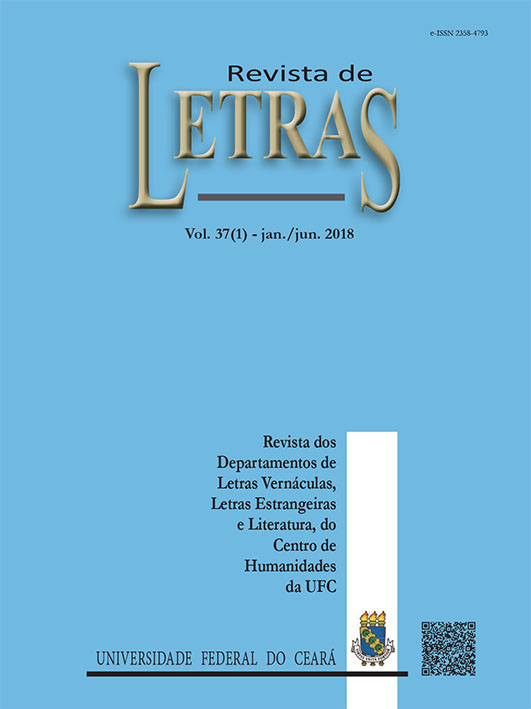THE GHOST OF A CHANCE? THINKING COLOURS ACROSS LANGUAGES AND CULTURES
DOI:
https://doi.org/10.36517/2525-3468.rdl.v1i37.2018.33756Palavras-chave:
Colours. (Un)Translatability. Language diversity. Literary culture.Resumo
In 1810, Johann Wolfgang Goethe suggested in Zur Farbenlehre that colour is a phenomenon diffi cult to categorise, resulting as it does from physiology, physics and perception. The fact that colour seems to be experiential to a large extent posits an interesting (and challenging) problem to literary works focussing on it. In this article, I argue that this issue is translational in nature and
takes shape at two levels: fi rst, at the level of its representation in literary works — how does one translate a visual experience into words? —, and secondly at the level of its re-representation in translated literary works — how does one translate what is essentially an already-translated visual experience? Whenever colour is semantically and morphologically constitutive of meaning in literature, untranslatability haunts the text. However, publishers and translators rarely shrink from the task of translating on this account. This stake against probability is well worth looking into, as it may uncover a wealth of creativity and a resistance to the understanding of art as solipsism. In this article, Paul Auster’s ‘Ghosts’, part of his New York Trilogy, will be read as a text suggesting
a culture-bound hermeneutics of colour, and as such probably untranslatable. I discuss the possible paradox of this degree of untranslatability against the text’s actual ‘translatedness’ by examining the two existing translations into European Portuguese.
Downloads
Downloads
Publicado
Edição
Seção
Licença
Autores que publicam nesta revista concordam com os seguintes termos:- Autores mantêm os direitos autorais e concedem à revista o direito de primeira publicação, com o trabalho simultaneamente licenciado sob a Licença Creative Commons Attribution que permite o compartilhamento do trabalho com reconhecimento da autoria e publicação inicial nesta revista.
- Autores têm autorização para assumir contratos adicionais separadamente, para distribuição não-exclusiva da versão do trabalho publicada nesta revista (ex.: publicar em repositório institucional ou como capítulo de livro), com reconhecimento de autoria e publicação inicial nesta revista.
- Autores têm permissão e são estimulados a publicar e distribuir seu trabalho online (ex.: em repositórios institucionais ou na sua página pessoal) a qualquer ponto antes ou durante o processo editorial, já que isso pode gerar alterações produtivas, bem como aumentar o impacto e a citação do trabalho publicado (Veja O Efeito do Acesso Livre).

.png)




.png)
